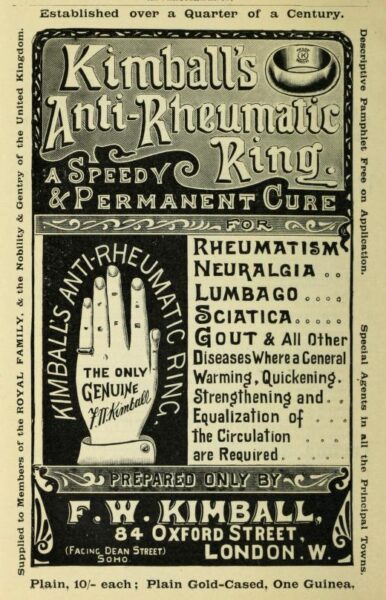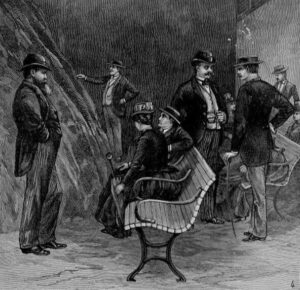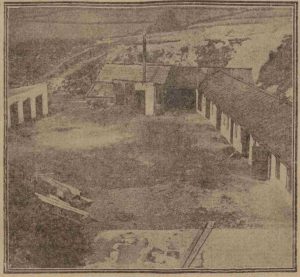Important Notice to the Afflicted
ALL Persons suffering from PARALYSIS, SPINAL
AFFECTIONS, RHEUMATISM, NEURAL-
GIA, ASTHMA, Pain in the Head, or all cases of INFLAM-
MATION or CONGESTION, should at once try Mr G. W.
Gedney’s VACUUM APPARATUS, by Dr. Junod, which has
been practised with great success for upwards of 40 years.
Testimonials of the highest character on application to
Mr. G. W. GEDNEY,
64, Victoria Street, London Road, Ipswich.
Source: The Ipswich Journal, Sat 24 June 1871
.
The apparatus referred to was developed in the 1830s by Victor Theodore Junod, and as Mr Gedney here clearly acknowledges Junod, it seems likely that he just had one in his possession rather than that he was claiming any credit for inventing it.
The device, known as the haemospasic apparatus or exhausting apparatus, was an alternative to blood-letting, producing the supposed beneficial effects without the dangers of blood loss. The picture below (taken from the London Lancet in 1853, but it was a woodcut that was also used elsewhere) shows how it worked, and this description from The Journal of Health (Grindrod, London, 1852) explains further:
…a tin boot, into which the leg of the patient is inserted, and from which the atmospheric air is gradually withdrawn, by means of a small air pump, the top of the boot being kept in air-tight apposition to the leg, by means of a broad belt of vulcanised india-rubber.
The idea was like dry cupping on a larger scale – the blood would be sucked into the limb (the device could be also be used on the arm), therefore withdrawing it from general circulation, weakening the pulse and possibly even causing the patient to faint. This, Junod believed, would reduce fever and palliate any inflammatory conditions.
The effects, while not gruesome, don’t sound very pleasant:
No pain, but only a slight uneasiness, is experienced in the limb enclosed in the boot, which is found, on being withdrawn, to be much increased in size, and the blood does not entirely return into the circulation, and the leg resumes its original size, at first for twenty-four hours. (Journal of Health).
The invention was popular in French hospitals and when it was displayed at the Great Exhibition, its potential to replace blood-letting resulted in it being tried out in British hospitals too, with mixed results. Army surgeon A. MacLean M.D. (quoted in The Medical Times, July-Dec 1853) was somewhat underwhelmed:
I have to report that this apparatus has been tried in a variety of cases in this hospital, with the view of testing its power as a therapeutic agent; and have to state that the beneficial results have been very partial, and in many instances no effect of a favourable character was obtained.
.





Oh, horrible, can just imagine the swelling, slug like veins!
Yes, the very thought of this makes me feel a bit faint, let alone the actual procedure!